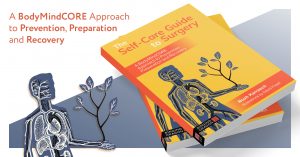Jess Glenny is a Yoga Register Teacher (Elder) and a C-IAYT yoga therapist. She has been practising yoga with hEDS since 1981, and for many years has specialised in working with hypermobile people. She is the author of The Yoga Teacher Mentor: A Reflective Guide to Holding Spaces, Maintaining Boundaries, and Creating Inclusive Classes (published in 2020) and her new book, Hypermobility on the Yoga Mat: A Guide to Hypermobility-Aware Yoga Teaching and Practice is available for pre-order now, publishing in February 2021.
In this article, adapted from her new book, Jess discusses why hypermobile people might be drawn towards the practice of yoga.
Yoga teacher Amber Wilds writes:
During my teacher training I was told, you probably won’t see hypermobility in your yoga classes very often, but it became apparent over the duration of our training that many of my fellow students were hypermobile (to varying degrees). While some had been diagnosed, others hadn’t been aware of their hypermobility prior to our training. I therefore began to question whether, rather than being a rarity in a yoga class, hypermobility was actually far more common than initially thought.[i]
Indeed, as we have seen, hypermobile people are one population you are pretty much guaranteed to encounter in significant numbers in any yoga class you teach. Why is this? Why do people whose range of joint motion is so excessive as to be considered pathological flock to an activity with the potential to increase it further? There are a number of reasons. Continue reading


 Posting relaxation exercises
Posting relaxation exercises


 Sarah Scharf, MFA is a yoga teacher, author of the upcoming book,
Sarah Scharf, MFA is a yoga teacher, author of the upcoming book, 
